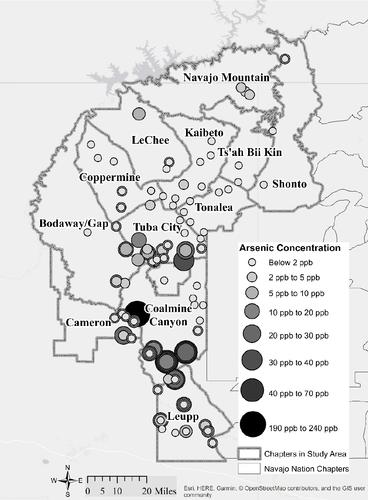Dissolved Uranium and Arsenic in Unregulated Groundwater Sources – Western Navajo Nation
Abstract
Concentrations of dissolved uranium (U) and arsenic (As) above drinking water standards in unregulated water sources pose various human health risks. Although high natural background concentrations may occur in some environments (Runnells et al. 1992), anthropogenic contamination concerns are especially troublesome on the Navajo Nation (NN), where past U mining activity may have contaminated water supplies. This research investigated U and As groundwater contamination issues in unregulated wells in the western portion of the NN. Objectives of this research were to provide insights to human health risks by assessing the spatial extent and seasonal variability of U and As concentrations while effectively communicating the potential contamination risks to the local Navajo people. Eighty-two unregulated wells were sampled in 2018; nine of these sources exceeded the maximum contaminant level (MCL) for drinking water standards for U (30 µg/L), and 14 exceeded the MCL for drinking water standards for As (10 µg/L). U and As levels were highest in the southwest portion of the study area and seasonal variability was observed in a subset of wells, especially shallower hand dug wells and hand pumps. The results were compiled into a report that was presented to NN chapters included in the study as well as the Navajo Department of Water Resources and the NN Environmental Protection Agency. Implications for regional water quality patterns can help to direct policy recommendations for well monitoring, water use, and remediation targets.


 求助内容:
求助内容: 应助结果提醒方式:
应助结果提醒方式:


